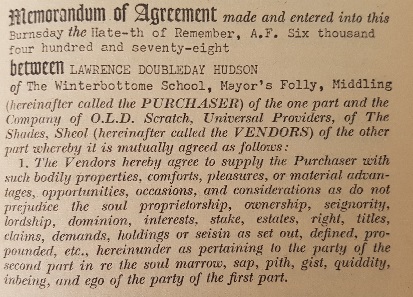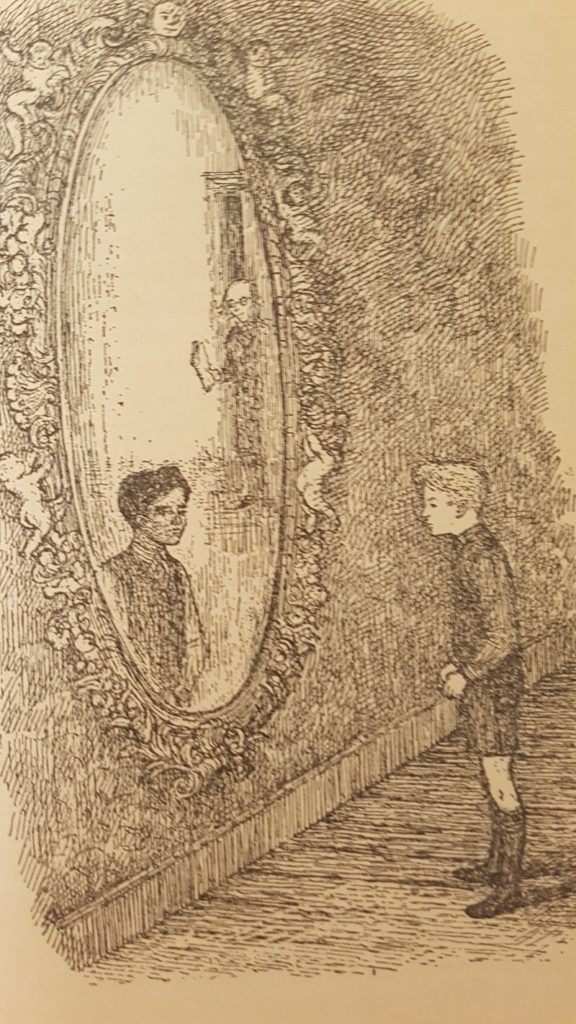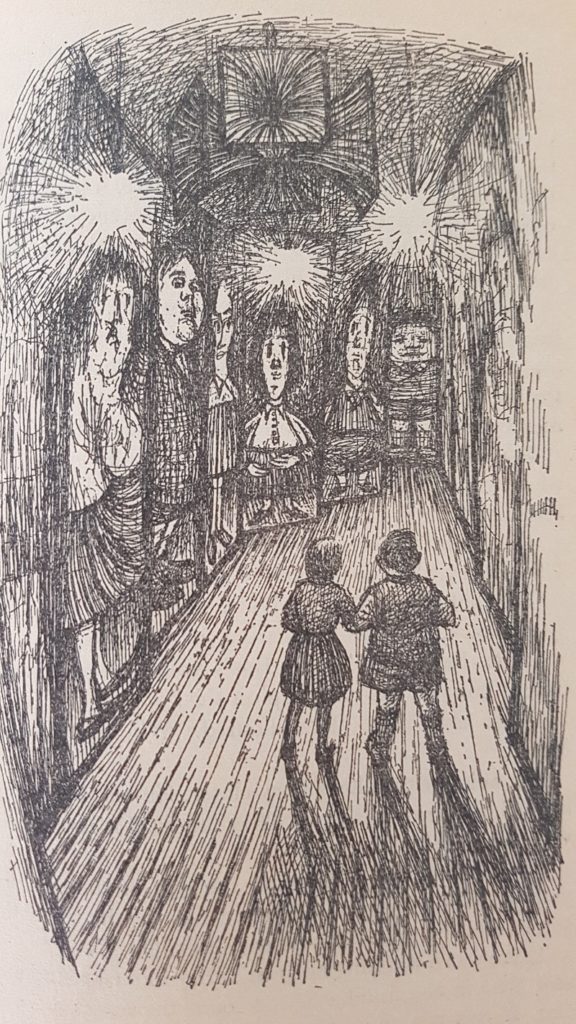 ‘And who the devil are you?’ asked Lawrie.
‘And who the devil are you?’ asked Lawrie.
Mr Scratch appeared uneasy. He even blushed.
‘That’s what they used to call me,’ he said. ‘But it’s very old-fashioned. I don’t like it. To tell you the truth, I never did like it. It seemed so crude. Though in the old days it meant something.’
Lawrie did not understand what the old gentleman was talking about…
‘It all used to be so simple when people believed,’ Mr Scratch said. ‘We used to know where we were. There was no need to explain. Faust knew what he was doing. But,’ he waved the papers in his hand, ‘today there are all these forms. If it were possible, I’d say it would be the death of me. I long for the days when they signed in their own blood on parchment.’
I never cease to be astonished at the range and quality of British children books published in the late 1950s and into the 1970s. Some of them would never get into print today, and not because of the – to us, now – unacceptable depictions of gender, race, class and identity (have I covered them all?). It’s because they are so odd. Like The Fair to Middling. What would an editor or agent say on reading it now? Very probably, “Sorry Arthur, we will pass on this one”. It seems as if an author could get away with writing whatever they wanted. Now, that’s an idea…
A visit to the Middling Fair is a treat for the children of the Winterbottome’s School for Incapacitated Orphans. It’s busy and noisy with sideshows, food stalls, rides, and games booths with silly prizes. All the usual fun. Only it is not usual at all. A series of life-changing choices and chances are on offer by the diabolic, sinister and weirdly powerful fairground operators.
 Peter, a musical prodigy who is going blind, is offered the opportunity to regain his sight. But seeing drowns out hearing, and so it’s a choice between ‘seeing what everyone else can see and hearing what nobody else can hear’. His friend and teacher, Miss Oxley, can lose her disfiguring scars and have a glittering career but there’s the chance she will also lose the two loves of her life – music and Peter.
Peter, a musical prodigy who is going blind, is offered the opportunity to regain his sight. But seeing drowns out hearing, and so it’s a choice between ‘seeing what everyone else can see and hearing what nobody else can hear’. His friend and teacher, Miss Oxley, can lose her disfiguring scars and have a glittering career but there’s the chance she will also lose the two loves of her life – music and Peter.
 Wally, a junior thief with thyroid problems, and his friend Florence get a taste of a dystopian ‘perfect society’ whose motto is ‘We-dom or Death’ – shades of the USSR under Stalin. Albino Lawrie knows what it’s like to sell his soul and look like everyone else. Mr Enticknapp, the headmaster and the orphanage’s generous patron and fairy godmother, Lady Charity Armstrong, enter the Amazement Park and undergo a return to childhood which gives them empathy with their disabled charges.
Wally, a junior thief with thyroid problems, and his friend Florence get a taste of a dystopian ‘perfect society’ whose motto is ‘We-dom or Death’ – shades of the USSR under Stalin. Albino Lawrie knows what it’s like to sell his soul and look like everyone else. Mr Enticknapp, the headmaster and the orphanage’s generous patron and fairy godmother, Lady Charity Armstrong, enter the Amazement Park and undergo a return to childhood which gives them empathy with their disabled charges.
Even Mr Carruthers, the crippled teacher who knows something strange is going on but experiences none of it, is changed forever, determining to overcome his bitterness and write the story of the Fair. The only child who takes up the offer is Emma, who is cured of her colour-blindness which – typically, for this novel – is a mixed blessing of wonder and disappointment.
This is an intensely moral story, full of compelling and serious life lessons while conveying some of the absurdity of the adult world to child readers; there are echoes of The Phantom Tollbooth by Norton Juster, some of Roald Dahl’s stories, Alice in Wonderland, Ray Bradbury’s Something Wicked This Way Comes. It’s funny, loaded with puns, wordplay, sophisticated allusions and humour but at the end I was left with an impression of something troubling, strange – and quite unique.
And by the way, the illustrations and cover are by Raymond Briggs, one of his very first commissions.


My goodness, this does sound so peculiar! Where did you find it? What year was it published? Of course this is the exact kind of book that shouts out to me in a second hand shop 🙂 I might need to borrow it some time!
It was on the bookshelf at home when I was a kid. I think I tried to read it, but it was probably too odd for me to understand. I found it in a second hand shop and thought I’d give it a go.
It was published in 1959. The author was quite an interesting and unusual man (did a bit of a Google search) who wrote adult novels as well as a kind of prequel James Bond for kids under another name. I’d love to get my hands on it one day.
And happy to loan. I think you’d really like it.